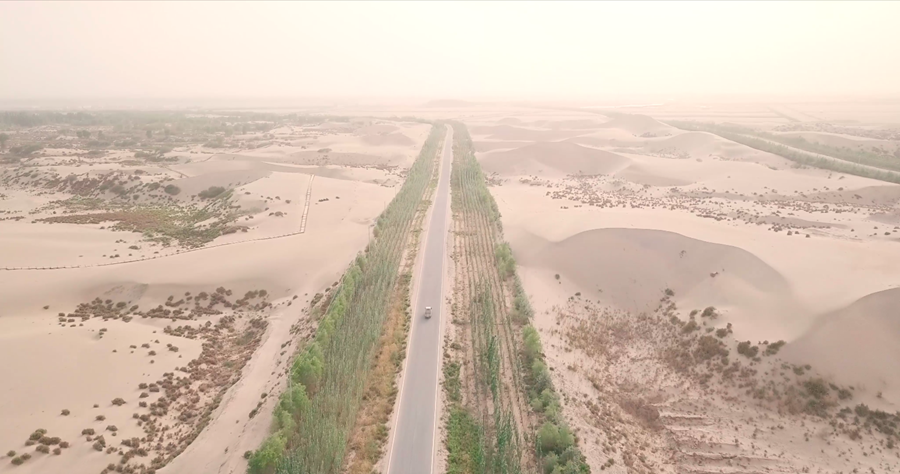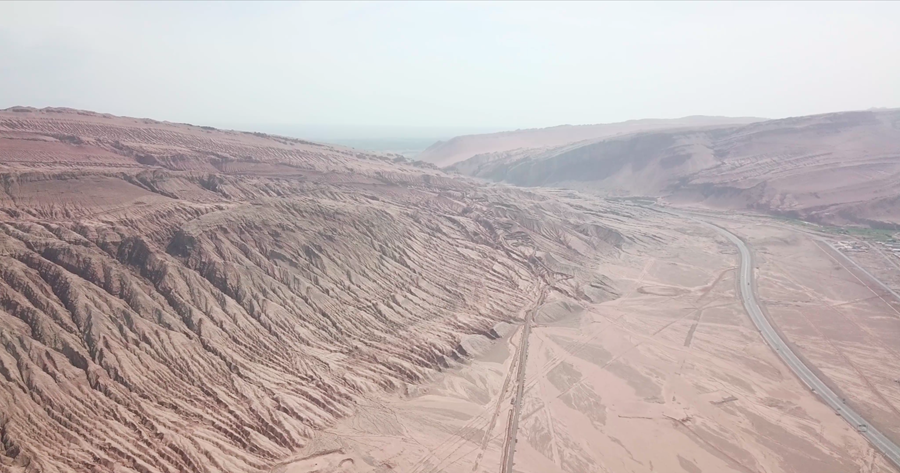The road of hope: Xinjiang's desert highway brings thousands of opportunities

The road of hope: Xinjiang's highway crossing right through the desert. (People's Daily Online / Liu Ning)
Xinjiang seemed to have it all: huge snow-capped mountains next to wide expanses of dry, flat desert land as well as crowded cities and beautiful but barren countryside. With an area of 1.66 million square kilometers, Xinjiang occupies about one sixth of China's territory and is more than four times the size of my home country Germany.
While travelling across the whole region, I could not help but notice the differences in general development between the northern and southern part of Xinjiang. One of the main reasons for this development gap seemed to be due to the late infrastructure expansion in the southern region.
In the 1990s, residents of Kashgar and Hotan were practically isolated from the northern part. A trip on the existing roads would take several days and thus would eat up too much time. I learned that the main reason for the lack of more direct roads was the Taklamakan Desert, which stretches over 1,000 kilometers from east to west and 500 kilometers from north to south. In order to connect the cities in the south of Xinjiang with the northern ones in a meaningful way, a road would have to be built straight through the desert, which at that time seemed to be inconceivable.
The major hurdle was the desert's strong winds, which sweep sand in all directions and would bury any road in no time. In addition, Xinjiang's sharp temperature fluctuations from over 40 degrees Celsius during the day to sub-zero temperatures at night would cause cracks in the cement and significantly affect the road’s life span. However, after ten years of research, Chinese scientists and engineers managed to find suitable solutions to overcome the prevailing extreme environmental conditions, and finally launched this very complex mission.
The current ten meter wide roadbed contains seven meter wide asphalt paved lanes with a strong base and a thin pavement structure. In addition, sand-based vibro-dry compaction, geotextile reinforcement of sand-based construction technology and reed barriers were installed to make the road passable.

The road of hope: Xinjiang's highway crossing right through the desert. (People's Daily Online / Liu Ning)
The 522 kilometer long desert highway from Luntai County to Minfeng County first opened to traffic in September 1995. Four years later, the route entered the Guinness World Records list and became famous all over the world.
Being accustomed to living in big cities with access to convenient infrastructure, it’s easy to forget how important something as simple as a road can actually be. For the people in Xinjiang this road has been “the road of hope” and listening to their stories on the changes they have experienced ever since it was built has deeply touched me and made me see things in a new light.
Photos
Related Stories
- Rediscovering Xinjiang
- Embroidery workshop boosts women farmers’ incomes in southern Xinjiang
- Senior official stresses stengthening Xinjiang Production and Construction Corps
- My personal observations of Xinjiang
- The West projects its own crimes onto China by accusing it of "genocide" and "colonialism," reports media
- China’s well-trodden path to rural revitalization and poverty alleviation in Xinjiang
- Xinjiang’s impressive development achievements
- Technology and tradition: How Xinjiang reconciles both
- China holds national meeting on pairing-assistance to Xinjiang
- Story of a Uygur tour guide in the ancient city of Kashgar
Copyright © 2021 People's Daily Online. All Rights Reserved.










